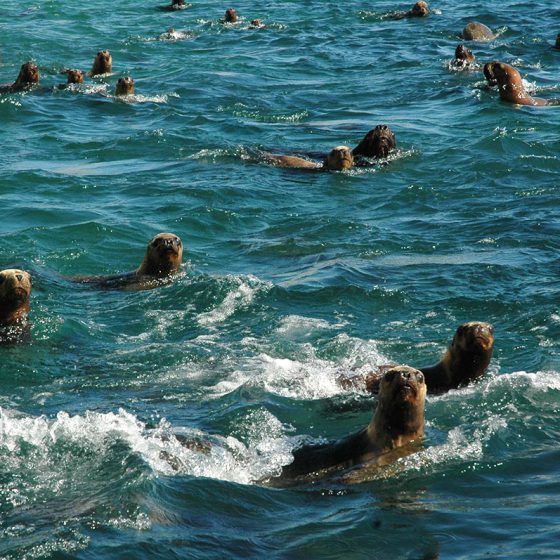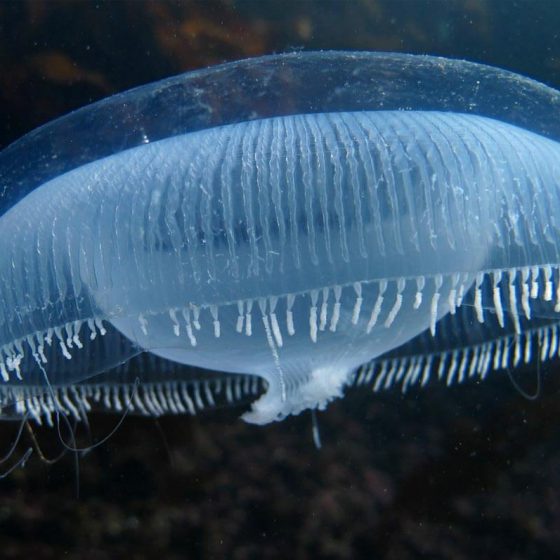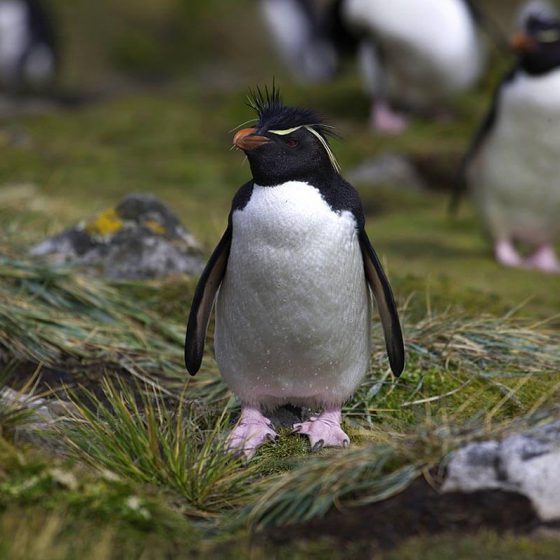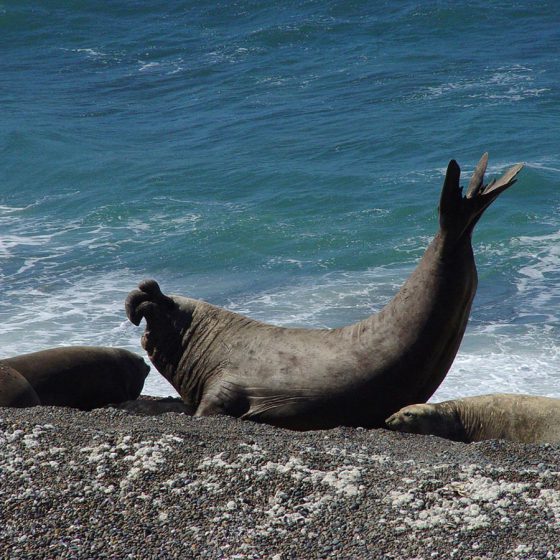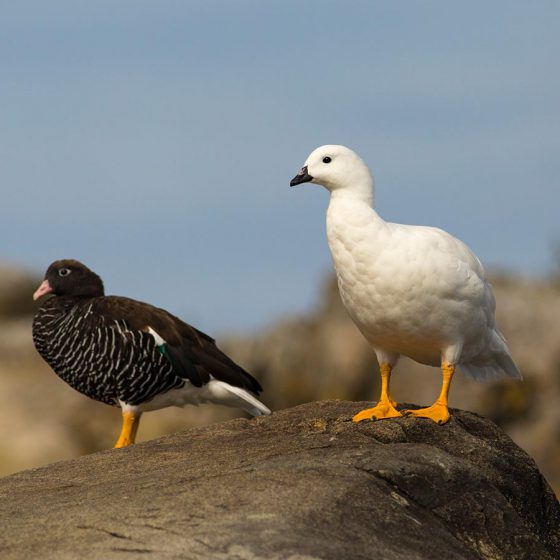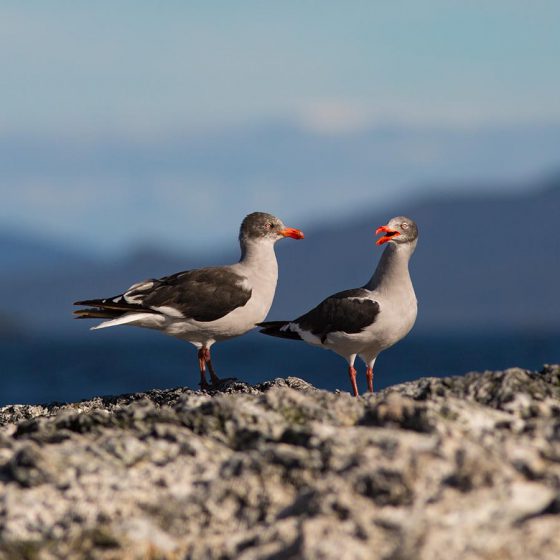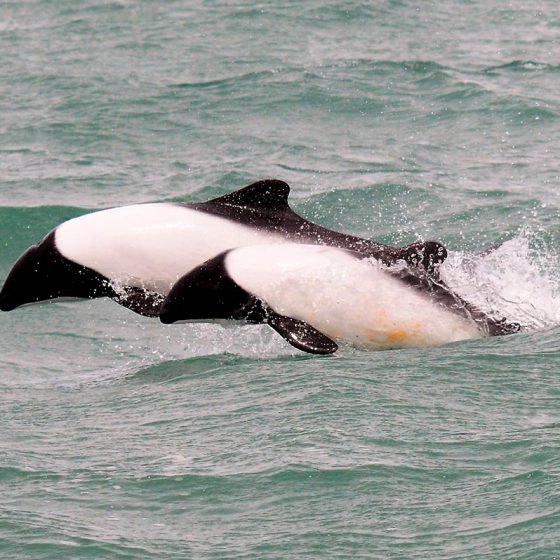VALUES
The Patagonian Sea provides ecological services of global importance. It is one of the most productive oceanic areas in the southern hemisphere.
© National Aeronautics and Space Administration
Its areas of high productivity are predictable over time and space.
Some of them, particularly the Patagonian continental shelf and slope, absorb large quantities of carbon dioxide from the atmosphere and thus help mitigate the effects of global warming.

© A. Rose
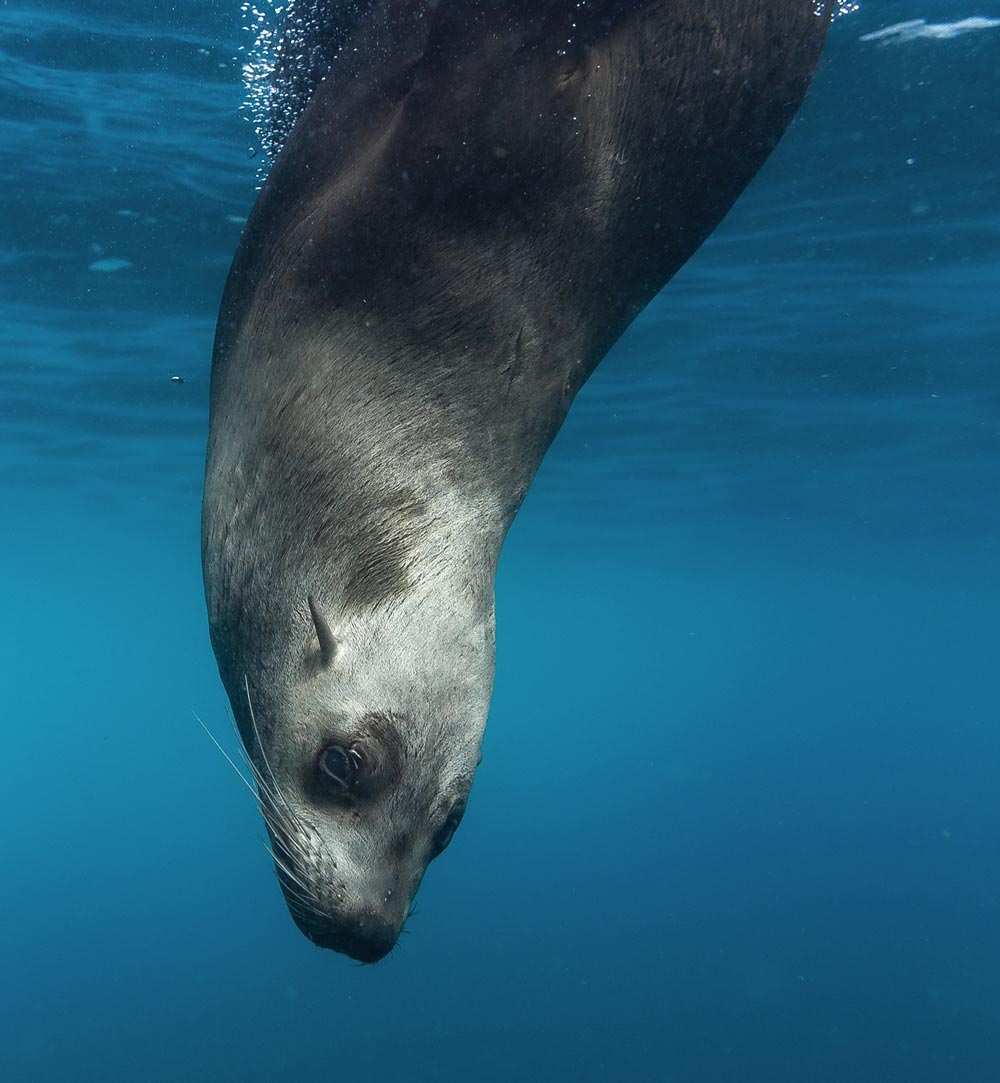
© S. Scrimshaw
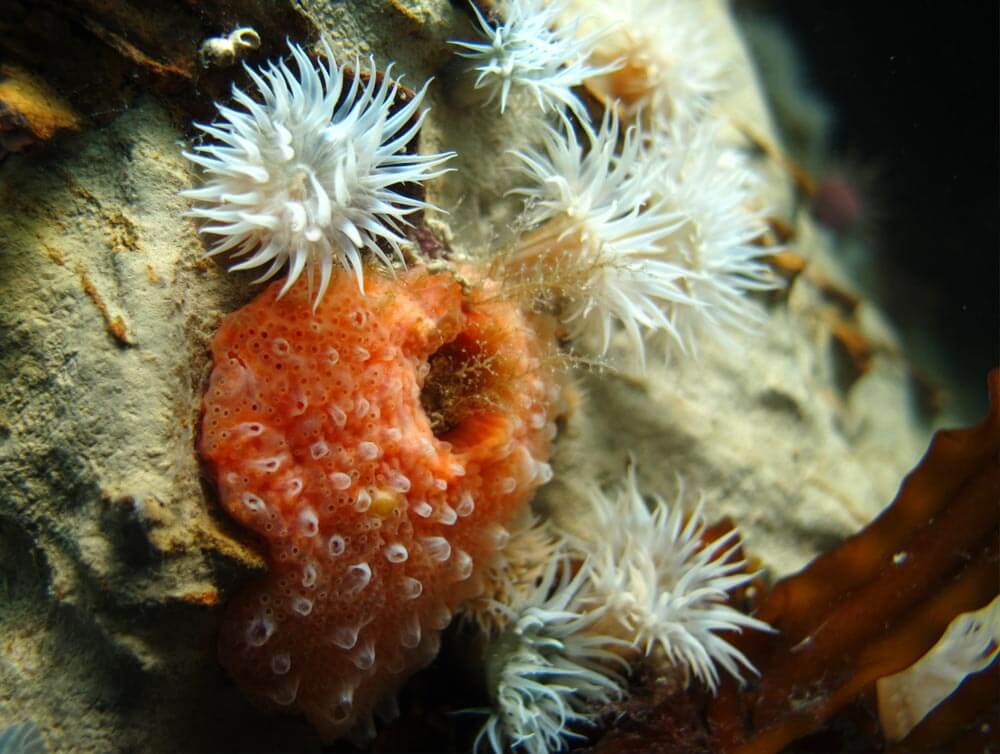
© ProyectoSub
It is an ecosystem where the diversity of species and level of endemism is accompanied by a great biomass and abundance of food for top predators.
A total of around 700 species of vertebrates has been recorded. Of invertebrates, mollusk alone account for over 900 species. Some 1,400 species of zooplankton have been identified in the waters of the Brazil and Falkland (Malvinas) currents.
The edge of the continental shelf is an environment with large aggregations of marine species on the seabed, in the water column and on the surface. The ecosystem has a global importance as a source of food for migratory species of birds, fish, turtles and marine mammals from distant areas.
Its nature sights make it valuable.
- Of the world population of black-browed albatrosses, around 75% (some 400,000 pairs) breed and feed in the region.
- Over a million pairs of Magellanic penguins breed annually in colonies on the mainland shores and on the islands.
- The only continental (and growing) breeding population of the southern elephant seal is found on the shores of Argentine Patagonia.
- The southern right whale, a species that is now recovering from the threat of extinction, breeds off the same coast.

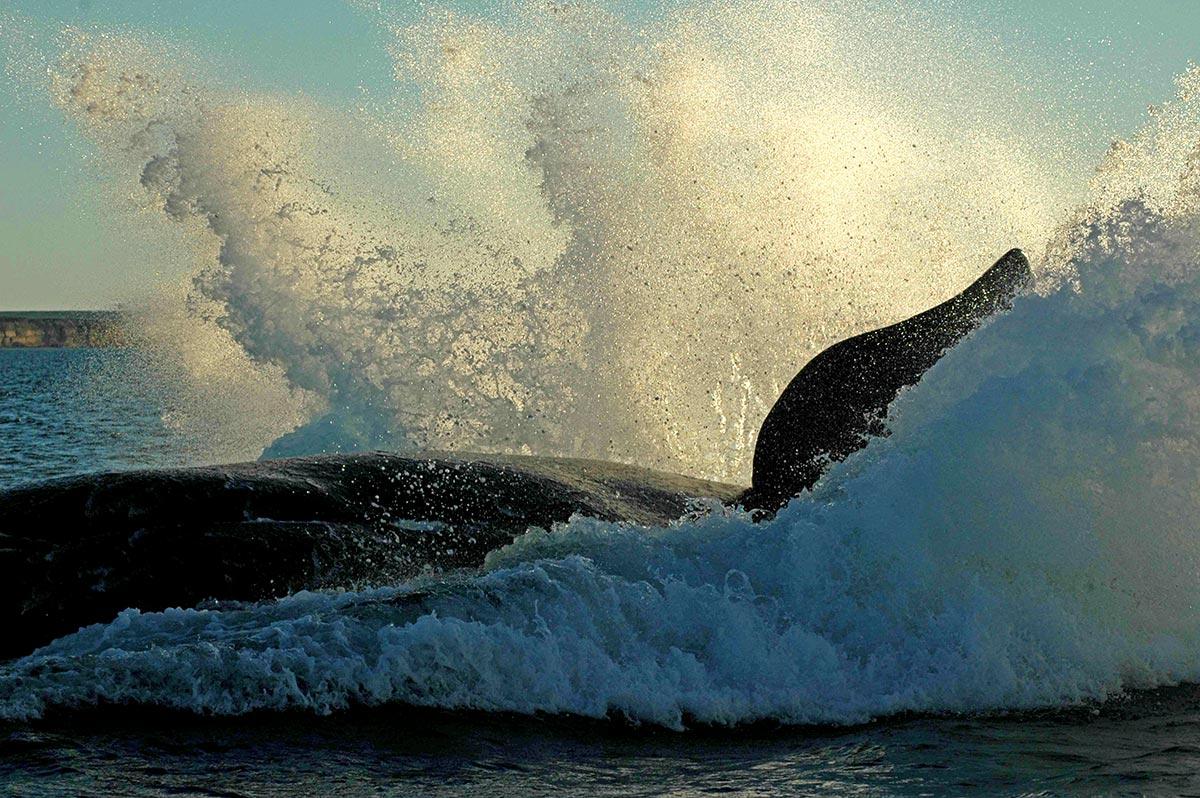
© M. Sironi – ICB



